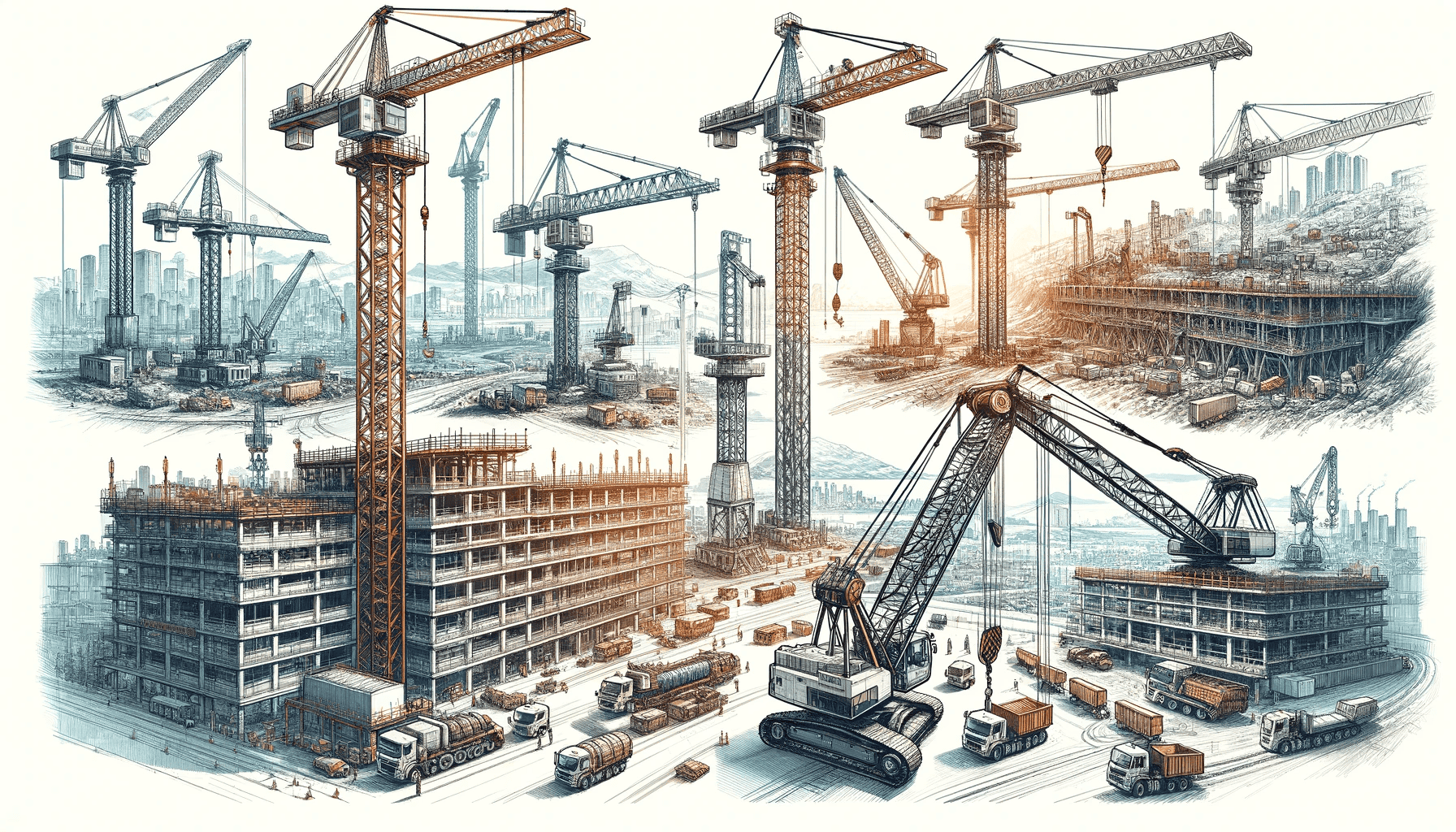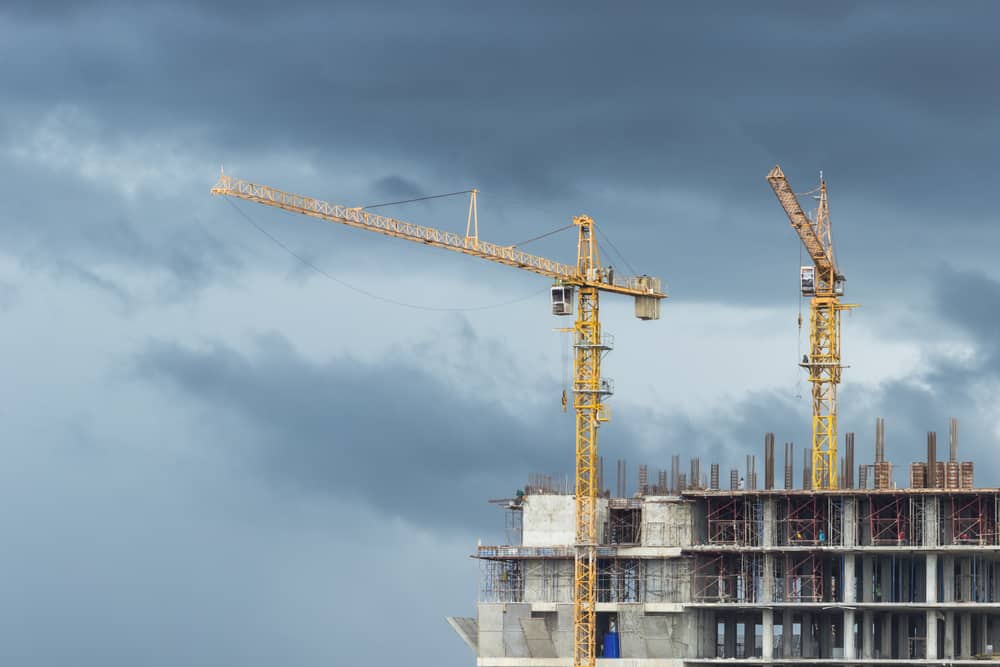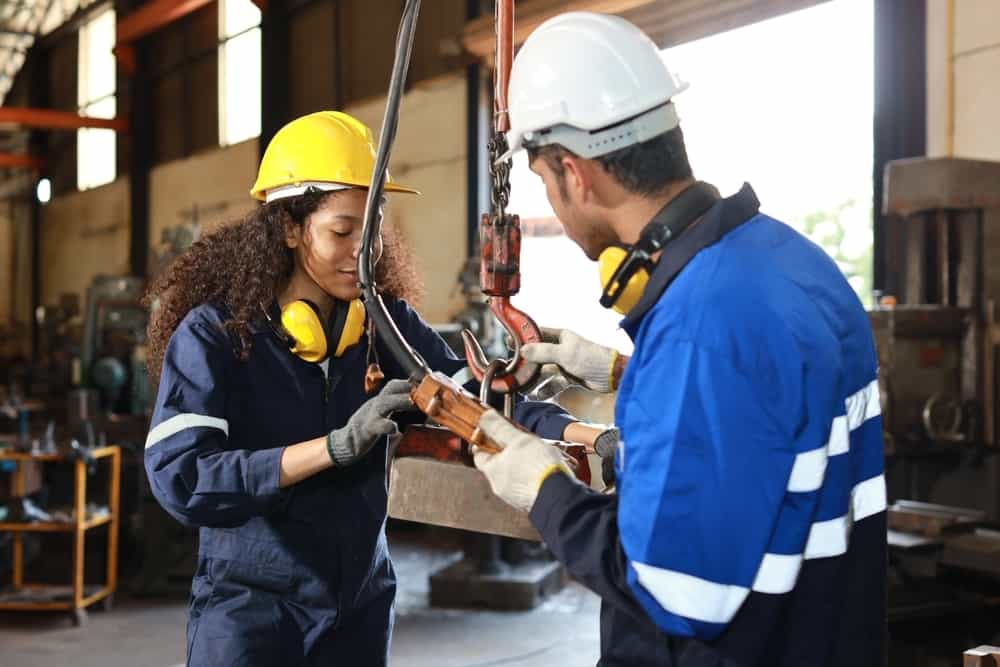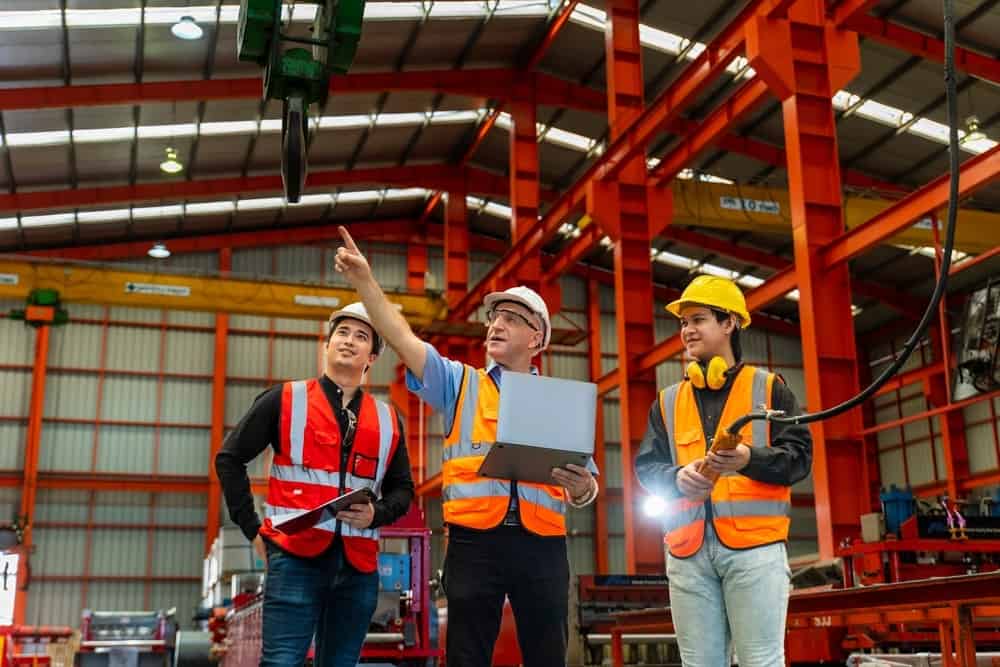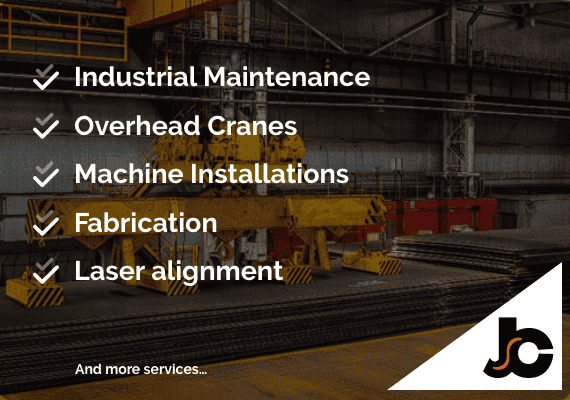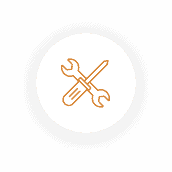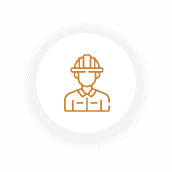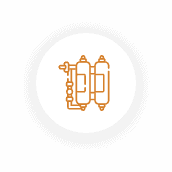In industrial operations, overhead cranes are essential, bearing the weight of critical tasks and heavy loads. The maintenance of these mechanical giants is not just a matter of routine care; it’s key to operational safety and efficiency. Neglecting this leads to serious consequences, ranging from operational downtimes to severe safety hazards.
Overhead crane maintenance is significant in the functioning of industrial activities and regular maintenance is not just a good practice but vital. It ensures the safety of workers and maintains the crane’s longevity and compliance with regulatory standards. Implementing effective maintenance strategies is the best way for your overhead cranes to continue to operate at their best, safely and efficiently.
Understanding Overhead Cranes
What Are Overhead Cranes?
Overhead cranes, a key component of industrial sites, are powerful machines used for lifting and moving heavy loads. These are common in environments where transporting large or heavy materials is a daily necessity, such as manufacturing plants, warehouses, and construction sites. They operate by running on elevated tracks, allowing them to move loads vertically and horizontally with precision and ease. The unique overhead design of these cranes maximises floor space, making them an ideal choice for areas where space is at a premium.
Types and Uses
There are several types of overhead cranes, each tailored for different tasks and environments. The most common types include:
Bridge Cranes: These consist of parallel runways with a travelling bridge spanning the gap. A hoist, the lifting component of the crane, travels along the bridge. They are versatile and used in a variety of industrial settings.
Gantry Cranes: Characterised by their legs, gantry cranes are used in outdoor applications like shipyards and rail yards. They are ideal for tasks that require heavy lifting over a large area.
Jib Cranes: With a horizontal jib or boom that supports a moveable hoist, jib cranes are used for lifting in a specific area, such as individual workstations.
Monorail Cranes: These are ideal for production processes that require lifting and transporting materials along a fixed path.
Key Benefits of Regular Maintenance
Enhancing Safety
Prioritising the safety of operators and workers is the most important thing in any industrial setting, and regular maintenance of overhead cranes is crucial in this regard. Well-maintained cranes are less likely to malfunction, significantly reducing the risk of accidents and injuries. Regular checks and repairs ensure that all parts of the crane are functioning correctly, providing a safe working environment. This proactive approach to safety helps prevent tragic accidents and fosters a culture of safety in the workplace.
Ensuring Reliability and Efficiency
The performance of overhead cranes is directly linked to their maintenance. Regular upkeep ensures cranes operate smoothly and efficiently, minimising the risk of unexpected breakdowns that halt production. A well-maintained crane is a reliable one, capable of performing tasks effectively without causing delays. This reliability not only boosts productivity but also ensures projects stay on schedule, crucial in fast-paced industrial environments.
Cost-Effectiveness
Investing in regular maintenance saves significant amounts of money in the long run. By addressing small issues before they turn into major problems, businesses can avoid costly repairs and replacements. Regular maintenance also extends the lifespan of the crane, ensuring the investment in such heavy machinery is maximised. This approach is far more cost-effective than dealing with the fallout of a major breakdown or the need for an untimely replacement.
Compliance with Regulations
Adhering to industry standards and legal requirements is not just a matter of compliance, but a commitment to operational excellence. Regular maintenance ensures overhead cranes meet the necessary safety and operational standards set by regulatory bodies. This compliance is critical to avoid legal repercussions and potential fines. It also demonstrates a company’s dedication to maintaining high standards in its operations, positively impacting its reputation in the industry.
Components of Overhead Crane Maintenance
Routine Inspections
Routine inspections are the first line of defence in maintaining overhead cranes. These include daily checks for any visible signs of wear or damage, weekly assessments of critical components, and monthly in-depth reviews of the entire system. These inspections help identify potential issues before they become serious problems, ensuring that the crane operates safely and efficiently.
Preventive Maintenance
Preventive maintenance involves scheduled servicing to keep the crane in optimal condition. This includes lubricating moving parts, adjusting mechanisms, and replacing worn components. By regularly servicing the crane, you can prevent the wear and tear that leads to breakdowns, ensuring the crane operates smoothly over its lifespan.
Repairs and Overhauls
When inspections reveal issues, prompt repairs are essential to maintain the safety and functionality of the crane. Sometimes, more significant overhauls are required to replace or refurbish major components. These repairs and overhauls are crucial to extend the crane’s operational life and to prevent minor issues from escalating into major failures.
Compliance Checks
Compliance checks are critical to ensure that the crane meets all industry standards and legal requirements. These checks involve reviewing the crane’s operation against regulatory guidelines, ensuring it is safe to use and compliant with all relevant safety standards. Regular compliance checks not only keep the crane operating within legal parameters but also reinforce a commitment to safety and reliability in the workplace.
Standard Daily Inspection Checklist
A standard daily inspection checklist for overhead cranes typically includes the following points:
Visual Inspection: Check for any visible signs of wear, damage, or corrosion on the crane’s structure, including the hook, wire rope, and chains.
Operational Test: Ensure that all controls and brakes are functioning correctly. Test the crane’s movements in all directions to check for any unusual sounds or vibrations.
Safety Devices: Verify that all safety devices, such as limit switches and overload indicators, are operational.
Load Test: Conduct a light load test to ensure the crane can lift and move as expected.
Check for Obstructions: Ensure the crane’s path is clear of any obstructions and that the work area is safe.
Inspect Electrical Systems: Look for any exposed wiring or signs of electrical issues.
Emergency Stop Function: Test the emergency stop function to confirm it’s working correctly.
This checklist is just a general guide and should be tailored to the specific type of crane in use and its unique features. Regular adherence to this checklist can significantly enhance the safety and efficiency of your crane operations.
Common Overhead Crane Maintenance Mistakes and How to Avoid Them
Identifying Mistakes
Awareness of common maintenance mistakes is crucial in ensuring the longevity and safe operation of overhead cranes. Some frequent errors include:
Neglecting Regular Inspections: Skipping routine checks can lead to undetected issues, escalating into serious problems.
Ignoring Minor Issues: Small problems, if overlooked, can develop into major faults, risking safety and efficiency.
Improper Use of Cranes: Using cranes for tasks beyond their capacity or intended purpose can cause undue stress and damage.
Delaying Repairs: Postponing necessary repairs can exacerbate issues, leading to more significant damage and higher repair costs.
Best Practices
To avoid these common mistakes, it’s important to adhere to the following best practices:
Strict Adherence to Inspection Schedules: Regularly inspect cranes as per the manufacturer’s guidelines and industry standards.
Prompt Addressing of Issues: Attend to any identified problems immediately, no matter how minor they seem.
Proper Training for Operators: Ensure that all crane operators are thoroughly trained and understand the crane’s capabilities and limitations.
Establishing a Maintenance Routine: Develop and stick to a comprehensive maintenance schedule that includes routine checks, preventive maintenance, and timely repairs.
Documentation and Record-Keeping: Maintain detailed records of all inspections, maintenance activities, and repairs for accountability and future reference.
Record-Keeping in Overhead Crane Maintenance
The Importance of Record-Keeping
Maintaining accurate and up-to-date records of crane maintenance activities is not just a regulatory requirement; it’s a critical component of effective crane management. These records provide a detailed history of the crane’s condition, repairs, and maintenance activities, offering valuable insights for future maintenance planning. They also serve as essential documentation in case of safety audits or investigations.
What to Record
Effective record-keeping should include the following details:
Dates of Inspections and Maintenance: Record the dates when each inspection and maintenance activity was carried out.
Nature of Inspections and Maintenance: Detail the type of inspection (daily, monthly, annual) and the specific maintenance tasks performed.
Findings and Repairs: Note any issues or defects found during inspections and the subsequent repairs or adjustments made.
Parts Replaced or Repaired: Keep a log of any parts that were replaced or repaired, including the date and reason for replacement.
Operator and Technician Details: Record the names of the operators using the crane and the technicians performing the maintenance.
Certifications and Compliance Checks: Document the results of any compliance checks or certifications the crane has undergone.
Incidents or Accidents: Log any incidents or accidents involving the crane, however minor they may be.
These records should be kept organised, easily accessible, and retained for a significant period as per regulatory requirements. This diligent approach to record-keeping not only ensures compliance but also contributes to the safe and efficient operation of overhead cranes.
Considerations for New Crane Purchases
When to Consider a New Crane
There comes a time in the lifecycle of any overhead crane when upgrading or replacing it becomes more practical than continuing with repairs and maintenance. Signs that it might be time for a new crane include escalating maintenance costs, frequent breakdowns, and the crane no longer meeting operational requirements due to changes in workload or technology.
What to Look for in a New Crane
When considering a new crane, key factors to keep in mind include:
Capacity and Size: Ensure the new crane can handle your typical load requirements and fits within your facility’s space constraints.
Type of Crane: Choose the type of crane (e.g., bridge, gantry, jib, monorail) based on your specific operational needs.
Safety Features: Look for advanced safety features and compliance with the latest industry standards.
Technology Integration: Consider cranes with modern technology for better efficiency and ease of operation.
Vendor Reputation: Select a reputable vendor known for quality products and after-sales support.
The maintenance of overhead cranes is crucial for ensuring operational safety, efficiency, and reliability. Understanding the types of cranes, their applications, and the importance of routine inspections, preventive maintenance, and accurate record-keeping cannot be overstated. As businesses navigate the complexities of industrial operations, recognising when to upgrade to a new crane is also key. Embracing regular maintenance is not just about compliance; it’s about keeping your operations and workplace safe. For expert guidance and professional maintenance services, don’t hesitate to contact our team at Jones Complete Services, where your operational safety is our top priority.

